 Diatonic Autoharps |
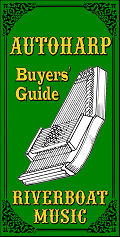 |
|
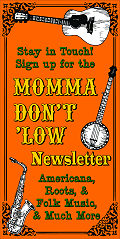

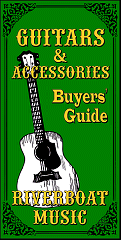
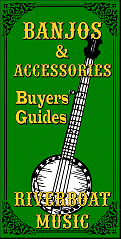
| Diatonic AutoharpsFirst of all, diatonic means that an instrument plays only in a single major scale. For example, if you removed the black keys from a piano, it would be a "diatonic piano" in the key of C. Most autoharps today play in many keys and have strings that play sharps and flats (like the black keys on a piano). They call these "chromatic" autoharps because of those extra notes. So if you take your store-bought autoharp to a "jam" and a song in Bb is followed by a song in D, you can just move your fingers onto a different set of buttons and keep playing along. But many advanced autoharp players who are playing solo, or in small ensembles where they have a "say" in the keys of the songs, reconfigure their autoharps to play only in one key (or maybe two). Strings that play notes they don't need are retuned to double notes they do. (For example, the Eb strings could be retuned to E or to D, depending on which notes you wanted to emphasize.) Benefits of this include:
Before you start reconfiguring your 'harp, you should realize that there are a couple potential "cons" to this approach:
G Diatonic Example - a 'harper who's chosen to tune her autoharp to play only in G doesn't necessarily need a G#, so she might tune the strings that would ordinarly play G# down to G. Then she'd notch the chord bars that use G so those new G strings sound each time. This will make the G chords sound fuller from now on. Also, when she needs to hit a G note to play the melody, she has double the chances of hitting a G and no chance at all of hitting a G#, which she might on a standard-tuned autoharp. In this example, the 'harper might also tune C# down to C, F down to E, Eb down to D, and Bb down to A. Again, she would reconfigure the chord bars so all of the chords that use C will now play twice as many Cs as they did before, and so on. Following this example,
What About Other Chords? - Of course, many songs used more than three chords. Fortunately,
Why are G/D Diatonics so Popular? 15- and 21- chord "chromatic" autoharps are designed for people who want to play a lot of different kinds of music on their autoharps. So they might need that Eb or Bb chord, or (shudder) Ab. But people who want to play "traditional music," say Folk, Celtic, or Bluegrass don't need to play in keys that use those chords. In fact, they're more likely to play tunes in G than they are in C. Those who play Folk music or who hang out with dulcimer players will usually need to play songs in D as well. For that reason, "diatonic autoharps" are often designed to play in G or D, which, technically makes them "semi-diatonic." These add a C#. Depending on how you set up your 'harp, this might keep you from doubling your C strings. But they add the ability to play A major, a true A7, and F#m, When someone tells you they have a GD autoharp, they're really not swearing at their instrument. When they write it, they often express it G/D, if that helps. How It All Started
Most folks don't think of it this way, but the original autoharps were diatonic. That is they only played the notes of a C major scale. That was possible because the chords they included (F, G7, and C) contained all of the notes in the C major scale (C, D, E, F, G, A, B).
The individual strings on the Model 1 ("three-chorder") had two and a half octaves of the C major scale (plus bass notes for G, C, and F). Believe it or not, this was intended to be primarily a melodic instrument. The player was expected to pick out the melody on the strings, the same way zither players had been doing for half a century. Once you found the melody notes, then you would choose chords that included those notes. (Back then, the "sheet music" Zimmerman commissioned for autoharp players used numbers instead of chord and note names, but the principle of a diatonic autoharp applies today.) Before long, folks were preferring 5-chord autoharps, which would play in F and C. This required adding a Bb chord and adding Bb to the C major scale. Those 5-chorders were so popular that they were made for over eighty years. Technically, they're F/C diatonics, though they don't include the extra chords you find in modern diatonics. Today's Diatonic 'HarpsIt seems to me that most folks who use diatonic harps in traditional music ensembles go to a G/D or a D/A (semi-) diatonic. But folks who are generally soloists, or who have direct control over the ensembles they're playing in can use any diatonic tuning they want.
If you order a diatonic (or semi-diatonic) autoharp from a modern luthier, it will probably reflect many of George's suggestions. If you want to reconfigure your own, you could do worse than to try track down or borrow a copy. In the meantime, here are two resources that may help you decide what approaches you want to take if you want to make your own diatonic autoharp (especially a G/D one). Wendy Grossman's Example of a G/D 21-Chord Diatonic - One example of a person who reconfigured a 21-chord autoharp to a diatonic so it would play well in G and D (and somewhat in A) is Wendy Grossman, of Shiremanstown, PA. Her account is here. Wendy used tips and resources from autoharp expert Bob Lewis. To see Bob's list of common autoharp chord layouts, both as they come from the factory, and as Bob frequently reconfigures them, click here. Wendy configured her 21-button autoharp to add chords that don't usually appear on autoharps at all, including suspended fourths, and no-third chords (useful in modal and certain kinds of mountain music). She also retuned strings that are typically only used on one or two chords, so they would double with strings on chords she used more often. So she retuned the G# strings down to G and recut the E7 chord bar so that it only plays E, B, and D. She also retuned the D# strings down to D and cut the B7 chord bar so that it only plays B, F#, and A. That way when she plays a G, there are almost twice as may strings sounding as before. When she plays a D, the sound is almost as rich. But she can still play 3-chord songs in A if she needs to. George Foss' Recommendations for a 15-Chord G/D Autoharp - Foss's Going Diatonic included drawings to help you cut the most important chords for several diatonic and semi-diatonic setups. Because G/D is the most common diatonic setup, and Foss' book is out of print, we've summarized some of his concepts in this article. Suggestions: Reconfiguring a 12- or 15-Chorder for DiatonicThe following charts spreadsheets etc., are examples only, just to show you the kinds of choices you have. We won't be held responsible if you do something stupid, however.Don't Start With Your "Good" Autoharp - If you're not used to taking autoharps apart, and you want to try a diatonic, I would recommend finding a used 15-chorder in good condition. Fortunately, that's not usually very hard or very expensive, since so many have been sold. If you come across a playable 12-chorder, that's a possibility as well. Go to our "Shopping for Used Autoharps" article for tips and "gotchas." Keep in mind that modern 15-chord autoharps (like OS15Bs) use exactly the same soundboard and materials as modern entry-level 21-chorders (like OS21Cs), so you're not sacrificing sound unless you've got, say, rusty strings. If you convert a used 15-chorder to diatonic and decide you like the setup, there's no reason you can't restring it and have two good 'harps, one diatonic for your solo work, and one chromatic for ensembles and jam sessions. If nothing else, you'll learn what is working or not working for you, so if you decide to convert a "good" autoharp to diatonic, or to order a diatonic from a luthier, you'll have a far better idea of what you need. Why You Might Get By With Fewer Chord Bars - One consideration when you go to a 1, 2, or 3-key autoharp with a lot of doubling is that there are only so many chords you can actually make with the remaining notes. So, while a 21-chorder may be easier to reconfigure, used 15-chorders are a lot cheaper and will still give you most of the chords you need in a limited key range. In early 2017, I bid on a 15-chord autoharp that needed some springs, etc., with the idea of reconfiguring it to a G/D diatonic. I went through several plans and ultimately settled on one that would allow me to double G, D, A, and E notes, while sacrificing a true E7 and B7 (because the harp wouldn't have G# or F#). As a side benefit, it would also let me play three- and four-chord songs in the key of A, as a side benefit. I came up with a configuration that would let me play chords from F to E, but would give me Bm and F#m, which I was sorely missing on my 21-chord 'harps. I plotted it all out on a spreadsheet, using Wendy's original template. (If that link doesn't work, click here.) During my planning, I realized that some of the strings were only used on ONE chord. For example, if I abandoned the Bb chord, I could tune the Bb strings down to A, doubling that note and getting more volume and texture in chords that used the A note. I wanted to keep a B7, but when I revisited Wendy's chart, I realized that her "B7" chord was actually missing the third (D#). That's okay, many piano arrangements I've encountered over the years left the third out of a dominant seventh chord, and you don't always miss it. Then I realized that I could do the same thing with an E7. That would free up the G# strings to go down a half a step and double on G. Eventually I settled on a configuration for that harp which would allow me to play most songs in C, G, D, and A, while doubling the G, D, and A strings. Technically, it's a C/G/D semi-diatonic. If I lost the F chord, I could have a G/D diatonic that doubled the E strings (by tuning F down to E). In the picture below, you'll see that the G, D, and A strings are doubled in those chords and many others. Since this would be used mostly to play simple Folk tunes, most of which revolve around three chords, I arranged the tonic ("major") buttons on the "top" row with the sevenths between the related chords on the second row. The I-IV-V7-buttons together setup is similar to the standard arrangement of 21-chorders, allowing you to keep the same relative finger positions while changing keys. (D minor is sort of an outlier in this setup, so I just moved it where it is to get it out of the way.) That is totally negotiable, of course. The Curse of Glued-On Buttons - The BIG hassle of working with 12- or 15- button harps versus 21-button Oscar Schmidt harps is that the buttons are "permanently" fastened to the chord bar. (This is true of the 21-chord Chromaharp, too.) On a 21-button Oscar Schmidt, you can move the chord bars anywhere you want them and slide the buttons around where they need to be to poke up through the button cover. So if you want to try something like this on a 12- or 15-chorder, and you really have to have Am in the top row or some such, make sure you work out the details BEFORE you cut and attach all of the new felt.
Note: The example to the right isn't a diatonic autoharp, but an old OS45 15-chorder reconfigured to her preferred button setup. But the process in the video is especially helpful for folks trying to make their 12- or 15-chord post-1970 autoharps diatonic. Click here to see her video. Feedback from an Expert - I also ran an early version of my configuration past Bob Lewis. He disagreed with my plan to remove G# and D# notes (and consequently "cheat" on E7 and B7). He also suggested that string doubling on autoharps without fine tuners is problematic, since it's just about impossible to keep two autoharp strings exactly in the same pitch without fine tuners. (This contradicts the experience of a number of folks who've made diatonics without fine tuners and been quite happy with them.) On a more positive note, he recommended allowing the minor third below the tonic to sound on the chord bars for my minor chords. So there's a low G on the E minor chord bar, a low C on the A minor chord bar, and a low D on the B minor chord bar. I could probably have put the low F below the D minor, but we didn't discuss that specifically. Note: - As of November 2025, I have NOT configured an autoharp this way, because a lot of other projects have come first. So I'm not guaranteeing anything; I'm just illustrating the sort of things you should consider when you consider altering your autoharp's conventional configuration. In addition, I've added George Foss's notes on converting a 15-chorder to diatonic in this article. To me it's easier to follow than the spreadsheet below. (And it's a little different.) But I'm retaining them both so you can work with whatever approach is easiest for you. To download the Excel spreadsheet and do your own tweaking, right click on the graphic. 
The format of the spreadsheet above is based on a spreadsheet Wendy Grossman published on her page. If you use either of these resources and document your efforts on the internet, please be kind enough to tell folks where you got them. Also, don't assume my plan is the best - I used it because it suited most of my needs, not because it was perfect. Look at Bob Lewis' suggestions, Wendy's example, and George Foss' recommendation, and any others you can find. Diatonic 12-Chorder in G, D, ASubsequently, I bid on a 12-chord Oscar Schmidt autoharp because A: it was cheap (~$30), and B: I liked the look. When I got it, the soundboard was cracked, so I figured it would make a good wall decoration. Then I tuned it up just to see what it would sound like (and if it would collapse into a pile of spinters), and I liked the sound. So I dabbled with the idea of reconfiguring it, using a similar note setup as I planned for the 15-chorder, except for retuning the F notes down to E. This would remove the F and Dm chords and keep me from using the harp in the key of C, but it would allow me to add doubling on E which would make the A, A7, Am, and Em chords that much fuller.I haven't done this conversion yet either - I'm still waiting to see if the thing will hold a tune for more than a few days, but if and when I do, it will probably look something like this: (To download the Excel spreadsheet and do your own tweaking, right click on the graphic.) 
You'll notice that the old 12-chorder has 37 strings instead of 36. The high D is a nice addition to a harp I'm basically reconfiguring to play in D anyway. Note: - The following sections will be fleshed out with photos and details as I get time to do the reconfiguration(s) I am contemplating. In the meantime, please refer to the links above, especially Wendy Grossman's account for more tips and details. Ordering Stuff You NeedAt the very least, you will need new felt. This has been coming and going recently, since a major felt supplier went out of business. As of this writing, it is available from Pete D'Aigle's D'Aigleharps marketplace. It is also occasionally available from Elderly.com and other sources. Be sure to order the correct width felt.The strings on one of the autoharps I want to convert seem shot, so I figure I'll probably wind up replacing those eventually, but those would cost more than the autoharp, so I figure I'll try to get by for now. Whether I need springs or anything else won't necessarily be obvious until I get into things. Disassembling the AutoharpAccording to Wendy Grossman, Murphy's Law of Folk Music #102 is "Never take apart a concertina or an autoharp on a shag rug." There are a mess of little springs that will disappear in a hurry if you aren't careful. Now, if your autoharp is very old, they may need replaced anyway. So you can use that excuse when you have to order more. Wendy recommends applying a tiny dab of superglue to the base of each spring, so they don't wander away while you're working.If you make a point of not losing the springs, disassembly is pretty easy. Remove the screws that hold down the cover at each end and very carefully remove the chord bars one at a time. Removing the FeltsIn some cases, you may be able to simply carve a couple extra notches into existing felt and reuse the bar so consider that before you strip the felt off all the bars. When you do take the felt off a bar, make certain you mark how far out the felt comes on either end of the bar - going too long or too short will cause problems. If you have a very old autoharp, the felts may be coming off by themselves. You may be able to cut them off using a very sharp knife. The main point isn't that you get all the glue off the bar, but that the surface you're putting the felt on is completely even before you apply the new felt. Replacing the FeltsIf you are doing this to a 12- or 15-chorder (or to a 21-chord Chromaharp) pay close attention to whether the chord bar you are refelting has a top- or bottom-row button. There isn't much more frustrating than felting a bar, putting it back on the harp, and realizing that you put a chord you wanted on a top-row button onto a bar with a bottom-row button. That's one reason I put the top-row chords on a different row in the spreadsheet. On a 21-chord Oscar Schmidt, you can just slide the buttons around once you get the bars refelted.Folks do this a few different ways. If you print either spreadsheet above full-sized, it may conform physically to the actual size you'll need for your autoharp (tell the printer driver not to shrink the page). If the edge side of the little blocks on the page lines up exactly with your string width, you may be able to cut the felt strips with a pair of sissors and just stick them on. My preference is to sticking the whole felt strip on and then use a razor blade, Xacto knife, or widget to cut a diagonal divot where the gap should be leaving a row of little V shapes in the felt. This significantly reduces the likelihood that the individual felts will come loose. Wendy made her spreadsheet so it lined up exactly with her strings. She also made a line every quarter of an inch on the underside of each bar (making sure those lines straddled the strings when the bar was set back in place). Then she used the spreadsheet to figure out exactly how long to make each segment of felt. RassemblingTest each felt bar individually to make certain it is aligning the way it needs to, then replace them in the sequence you desire.Additional ResourcesOther places you can find more (and possibly better) information include:
ConclusionOnce again, I wrote this article before attacking the projects described in it, but I wanted to publish the results of my research as soon as possible, because I've already been getting questions about it. Hopefully, I'll be better informed eventually and provide photos and details, and - most likely - corrections to what I'm publishing today.In the meantime, please contact us with any questions at all - reader questions are the main thing that drivers our research, so we're always happy to hear from you. Best of luck! In the meantime, I hope this article gives you enough information to make the decision that's right for you. And keep playing, singing, and sharing, whatever else you do! Best of luck!
And please stay in touch!
|
|
All material, illustrations, and content of this web site is copyrighted ? 2001, 2002, 2003, 2004, 2005, 2006, 2007, 2008, 2009,
Note: Creek Don't Rise (tm) is Paul Race's name for his resources supporting the history and music of the North American Heartland as well as additional kinds of acoustic and traditional music. For questions, comments, suggestions, trouble reports, etc. about this page or this site, please contact us.
| |||||||||||||||||||||||||||||||||||||||||||||||||||||||||||||||||||||||||||||

 Back in the 1990s, musician George Foss recognized the challenges facing people considering such conversions. He wrote a book that documented such conversions and made many suggestions. Unfortunately,
Back in the 1990s, musician George Foss recognized the challenges facing people considering such conversions. He wrote a book that documented such conversions and made many suggestions. Unfortunately, 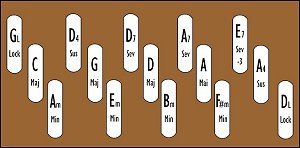
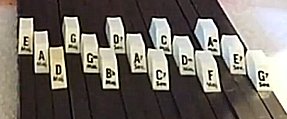
 The illustration to the right shows the button arrangement that would result from the configuration shown above.
The illustration to the right shows the button arrangement that would result from the configuration shown above.
 The illustration to the right shows the button arrangement that would result from the configuration shown above.
The illustration to the right shows the button arrangement that would result from the configuration shown above.





































